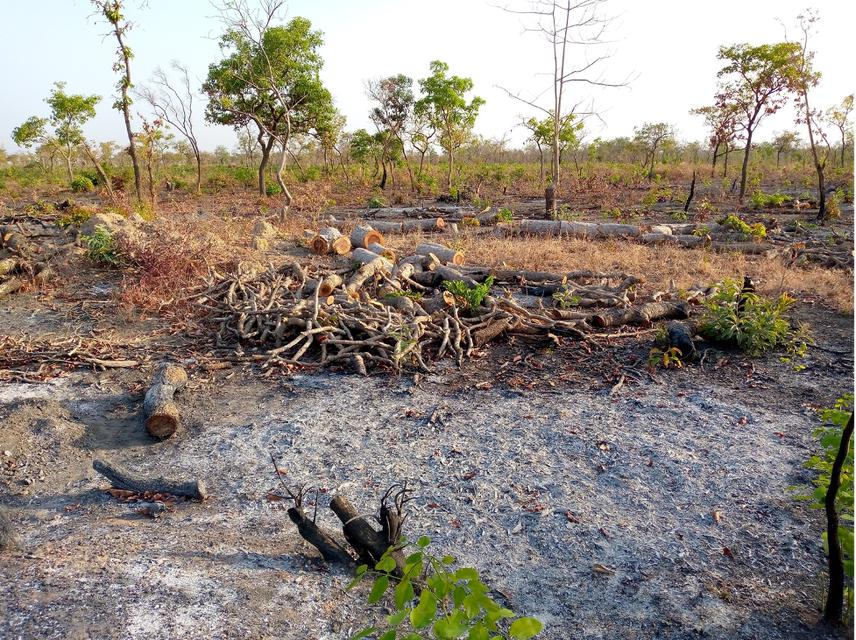Gideon Appiah
Shea tree: - Vitellaria paradoxa grows across 4 million km2 of Sub-Saharan Africa (Bello-Bravo, et al., 2015). Shea parklands provide a sustainable source of edible fat and stearic acid that is currently second to cocoa butter in the multi-billion-dollar chocolate and cosmetic sectors (Bello- Bravo, et al., 2015). In Ghana, Shea is an endemic indigenous and economically important species (Lovett, and Haq, 2000), in the rural landscapes of Northern Ghana inhabited by the highest population of the country’s marginalized and rural poor people. The species is a major source of food, raw material, and income for the rural populace, particularly women who derive primary livelihoods from shea butter (Pouliot, M., 2012). However, the species is severely threatened as its sustainable utilisation (butter, fruit, and fuelwood production) is compromised by charcoal production and illegal logging (Brobbey et al., 2015).

Shea trees cut down waiting for charcoal burning.
The challenges in the study community are lack of conservation awareness, lack of baseline data and local management action plans. This issue is increasingly putting the shea tree (already Vulnerable in the IUCN Red List) at risk of local extinction with the consequent threats to the livelihoods and food security of particularly marginalized groups like women and children. From a policy viewpoint, the depletion of the tree holds critical implications for national commitments to the achievement of the Sustainable Development Goals 1, 2, 5, 13, and 15. This project is seeking to build on the participation of the local communities to create conservation awareness and build local capacity for a change of mindset towards sustainable utilization and conservation of shea trees in the landscape. We will employ tailored training to address the gaps. This will be supplemented by a tree planting exercise to enhance the tree resource base in the landscape and off-set demand from competitive but unsustainable use of the shea tree.
Header: Parked shea tree logs ready for charcoal burning.